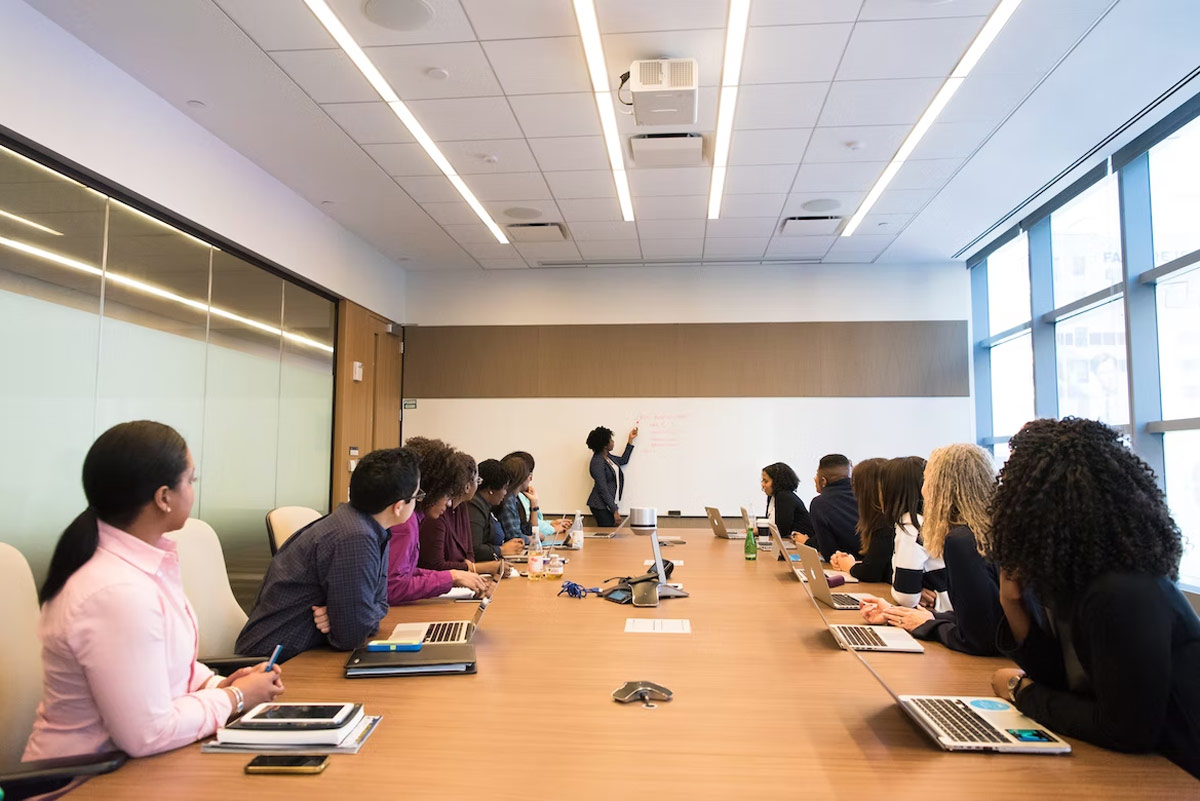
For a long time, science, technology, engineering, and mathematics (STEM) have been fields dominated by men, who are mostly upper-class and upper-caste.
According to the World Bank report on advancing women’s participation in STEM in 2019, about 43% of STEM graduates in India are women, which is the highest in the world, but going up the ladder, their share decreases to only 14% in STEM jobs.
The lack of research on LGBTQIA+ community in STEM further opens up a space to marginalise such groups more. The quotient of Diversity, Equity, and Inclusion (DEI) needs to improve in India.

Traditionally, women were believed to be bad in subjects like science and mathematics. This is our patriarchal society’s implicit bias towards women and minorities, that hoodwinks them into believing that they should instead stick to subjects like social studies, arts, and literature. However, over the years, more women have steadily opted for STEM subjects, but the problem lies in sustaining themselves in a field where the existing structures do not favour them.
Vanya Pandey, a consultant with The Council on Energy, Environment and Water, told us, “The difficulty you face in sustaining in the field, rather than pursuing one is what triggers the gender gap. You will find many girls pursuing science subjects, so the gender disparity has lowered in the aspect of getting a STEM degree, rather than charting the full course of maintaining a career in it.”
Due to internalised prejudices, Pandey finds it more comforting to work with policy analysis than do the data sciences part of the job. “I am apprehensive of my data analytical skills, and since school I have seen girls being hesitant to explore technical and more computer-related fields,” she said. This boils down to the conditioning we are exposed to in schools, other educational institutes, and the environment we are provided with.
Coming from a conservative background, Savita* who now works for a public sector undertaking, was the first woman engineer in her family. “I lost my father at an early age and my mother was a homemaker. Most people during my childhood would say that to go for an undergraduate degree and get married, but seeing my mother struggle so much financially, I had to at least be financially independent,” she said.
Savita’s mother had one condition though, her daughter should only take up engineering from a college in her city. Luckily, she got into Delhi College of Engineering, otherwise her dreams would go up in flames.
Reena Dayal, an alumnus of IIT Roorkee and the Chairperson of the Board and CEO of Quantum Ecosystems and Technology Council of India said that while more women have entered engineering colleges, their percentage remains low in IITs. “People might believe that women are not cut out for the competition, but the reality is that we need to look at the socio-economic imperatives in our country. It is linked to how much money is spent on a woman's education compared to men in preparation for the exams, which helps them clear it.”
Unconscious biases also play a pivotal role in limiting women in STEM. Dayal said that sometimes people make decisions that might have a positive intent, but they are harmful. “I recall a woman decision-maker saying that one of her employees was capable enough to take up a role in a foreign country, but felt like it would be a burden on her as she had a small kid,” she said. “I asked her to at least check in with the female employee before making a decision, and interestingly this woman agreed to take up the opportunity.”
It is important to get rid of biases that are embedded in our social fabric and treat people as individuals before anything else.
Don't miss:Who is Marie Tharp, The American Geologist Google Doodle is Celebrating Today
Vinita Nair, the platform director at a renowned company, said that she did not face any discrimination during her education, but there were few girls in her batch. “The number of girls was very less compared to the number of boys.” Studying in a metropolitan city she could see the gradual uptick in women in STEM.
But when joining work, there were a lot of departments where women were not even considered. “Women could only choose careers where there was a sitting job maybe because they did not want them to travel. For instance, when I joined in 1991, I started working on a software which was patented. As a part of industrial automation, I had to travel to the factory to commission my software. But there were no women's washrooms and we were not entertained in any other place except the control room,” she said.
She sees a sea of change now as earlier women were even restricted by their parents to take up full-time engineering jobs. “They chose professions such as teaching, which were half-day and they could balance out their family with their work. Even my father motivated me to take up lectureship in the same college I was studying,” said Nair. “The only STEM field open to women would be medicine because it meant you could have the flexibility of having a clinic.”
In a patriarchal society, women are the sole caregivers for their children and are taught to take care of their families. “Their education and career takes a backseat,” she said. “When I started out, many women would not even go for higher education because they would get married early or pursue an undergraduate degree for the sake of it and get married after.”
Being a gender chair for her company, they created a gender slate to measure the headcount and ratios, which showed the murky reality of women in tech-based roles. The dwindling numbers as you go up the hierarchy made them bring gender-inclusive hiring and promotion.
There is a leaky pipeline towards leadership positions
Vinita Nair said, “Men think that they can’t ask us to stay back, we are not open to travel, or we cannot go out for dinners if leadership visits are there and entertain the leaders.” Nair continued, “The mindset that men have is that they can’t scold us, be harsh, or give extra work. They think they have to be more careful while giving feedback, especially with the #MeToo movement coming up about sexual harrasment at the workplace.”
All of these reasons make people feel more comfortable in promoting a man over women, despite them having the same calibre. Only when there are stark differences such as the woman having greater capabilities, then they don’t have any choice. “A woman has to outperform men by 30% to 40% to prove her mettle,” said Nair.
Nair mentioned that for returning mothers, who were either coming back after childbirth or have a career gap, she realised that they were suffering from biases when joining IT services as people feel that they will take time to come to the mainstream and receive normal performance ratings, despite going above and beyond. “This is because bosses mark them down for the time they were gone for maternity leave than when they performed well in office.”

The gender disparities in STEM work on a multi-level platform, so bridging these gaps also requires multi-level solutions.
“There should be a solid support system, a gender-responsive teaching and environment, and counselling which is free of gender stereotypes that helps students better choose what field they should go for, internships, and grants from the government to lessen the gender gap,” said Pandey.
The change should happen from the grassroots level. Nair believes that companies don’t get talent while recruiting women from colleges and campuses. “The sex ratio is less especially in IITs and tier-1 colleges,” said Nair. “We need to help schools and encourage more women to come up through corporate programs.”
Her company has associated itself with an NGO that gives women special training in STEM. “The confidence that builds up in them through this training is impeccable. They finally feel that they can do anything under STEM,” she noted. “Getting hands-on experience really helps them feel that it is easy and interesting as well.”
Moreover, they have a hiring checklist where they include a woman on the panel, so that biases like “she is about to get married” or “she is having a baby” do not come up. And they also have a 50% quota for women, so that equal number of positions go to them.
“Having strong women role models is as important to show that real-life women have gone through similar challenges and overcome them. Younger women can take inspiration,” said Dayal. “It is essential to not only focus on their successes, but the obstacles they had to face.”
More than that, having a woman mentor to guide you really helps.
On the other hand, the advent of work from home has given more flexibility to women in their jobs which aids them to develop a work-life balance where they can take care of their familial responsibilities as well. “It helps women pass through different life stages without quitting,” said Savita.
Don't miss:Marital To Maternal Status: 5 Women Share Weird Questions Asked During Interviews

Cis-hetero men bring just a particular view point to the table, while other genders have different skill sets, and their conceptual and critical thinking abilities are completely distinct. More than that, they have exceptional leadership qualities, which can elevate the STEM industry, which includes being more empathetic and compassionate.
During an assistive development program to assess skills in their company through giving case studies, Savita saw women outshining men in their multi-tasking abilities while tackling the questions. “They could handle the situations in a better way, their communication skills were stronger and they expressed themselves well,” she said.
Nair feels that men are hardwired in a certain way, and when it comes to logic, you have to discuss every data point. “So you should have diverse and inclusive thought processes in the room to come up with new ideas. It is very important to have different perspectives,” she said.
Dayal also believes that the industry has a huge incentive to include women because they form a major portion of the consumer market. “Imagine if products are only designed by men, then what happens is they tend to miss valuable information in product design and marketing. It is not designed for a variety of stakeholders,” she concluded.
*Name changed upon request for confidentiality
Our aim is to provide accurate, safe and expert verified information through our articles and social media handles. The remedies, advice and tips mentioned here are for general information only. Please consult your expert before trying any kind of health, beauty, life hacks or astrology related tips. For any feedback or complaint, contact us at compliant_gro@jagrannewmedia.com.